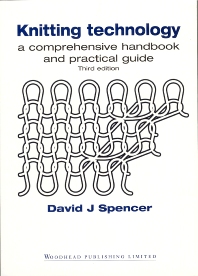Books in Non metals processing
Books in Non metals processing

Manufacturing Flexible Packaging
- 1st Edition
- Thomas Dunn
- English

Engineering Textiles
- 1st Edition
- Y El Mogahzy
- English

Developments in the Formulation and Reinforcement of Concrete
- 1st Edition
- Sidney Mindess
- English

Mineral Wool
- 1st Edition
- B Sirok + 2 more
- English

Biomechanical Engineering of Textiles and Clothing
- 1st Edition
- Yan Li + 1 more
- English

Welding Symbols On Drawings
- 1st Edition
- E N Gregory + 1 more
- English

Knitting Technology
- 3rd Edition
- D J Spencer
- English

Welded Design
- 1st Edition
- J Hicks
- English

The Welding Workplace
- 1st Edition
- R Boekholt
- English

3-D Textile Reinforcements in Composite Materials
- 1st Edition
- A Miravete
- English